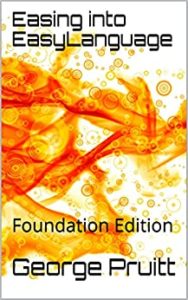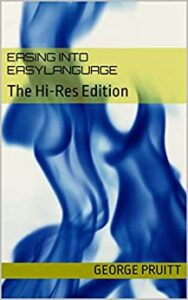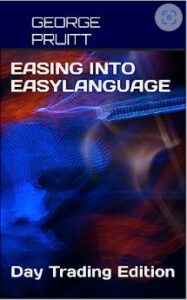Just wanted to let you know that my latest book has just been published.
Trend Following Systems: A DIY Project – Batteries Included: Can You Reboot and Fix Yesterday’s Algorithms to Work with Today’s Markets?
Trend Following Systems: A DIY Project – Batteries Included
This book introduces my new Python back-tester, TradingSimula-18. It is completely and I mean completely self contained. All you need is the latest version of Python and you will be up and running trading systems in less than 5 minutes. Fifteen years of data on 30 futures is included (data from Quandl). I have included more than 20 scripts that you can test and build on. This back-tester is different than the one I published in the Ultimate Algorithmic Trading System Toolbox. It utilizes what I call the horizontal portfolio spanning paradigm. Instead of sequentially testing different markets in a portfoio:

It process data in the following manner:

This form of testing allows for decisions to be made on a portfolio basis at the end of any historic bar. Things like inputting portfolio performance into an allocation formula is super simple. However, this paradigm opens up a lot of different “what-if” scenarios.
- What If I Limit 2 Markets Per Sector
- What If I Turn Off A Certain Sector
- What If I Liquidate The Largest OTE loser
- What If I Liquidate The Largest OTE winner
- What If I Only Trade The Ten Markets With The Highest ADX Values
All the data and market performance and portfolio performance is right at your fingertips. Your testing is only limited by your creativity.
The best part is you get to learn raw Python without having to install complicated libraries like SciKit, Numpy or Pandas. You don’t even need to install distributions of commercial products – like Anaconda. Don’t get me wrong I think Anaconda is awesome but many times it is overkill. If you want to do machine learning then that is the way to go. If you want to test simple Trend Following algorithms and make portfolio level decisions you don’t need a data science application.
There isn’t a complicated interface to learn. Its all command line driven from Python’s IDLE. 90% of the source code is revealed for the back-testing software. Its like one of those see-thru calculators. You see all the circuits and semiconductors, but in Python. So you will need to flow through the code to get to the sections that pertain to your test. Here is a small sample of how you set up the testing parameters for a Donchian Script.
#--------------------------------------------------------------------------------
# If you want to ignore a bunch of non-eseential stuff then
# S C R O L L A L M O S T H A L F W A Y D O W N
#--------------------------------------------------------------------------------
#TradingSimula18.py - programmed by George Pruitt
#Built on the code and ideas from "The Ultimate Algorithmic Tradins System T-Box"
#Code is broken into sections
#Most sections can and should be ignored
#Each trading algorithm must be programmed with this template
#This is the main entry into the platform
#--------------------------------------------------------------------------------
#Import Section - inlcude functions, classes, variables from external modules
#--------------------------------------------------------------------------------
# --- Do not change below here
from getData import getData
from equityDataClass import equityClass
from tradeClass import tradeInfo
from systemMarket import systemMarketClass
from indicators import highest,lowest,rsiClass,stochClass,sAverage,bollingerBands
from indicators import highest,lowest,rsiClass,stochClass,sAverage,bollingerBands,\
adxClass,sAverage2
from portfolio import portfolioClass
from systemAnalytics import calcSystemResults
from utilityFunctions import getDataAtribs,getDataLists,roundToNearestTick,calcTodaysOTE
from utilityFunctions import setDataLists,removeDuplicates
from portManager import portManagerClass,systemMarkTrackerClass
from positionMatrixClass import positionMatrixClass
from barCountCalc import barCountCalc
from sectorClass import sectorClass, parseSectors, numPosCurrentSector,getCurrentSector
#-------------------------------------------------------------------------------------------------
# Pay no attention to these two functions - unless you want to
#-------------------------------------------------------------------------------------------------
def exitPos(myExitPrice,myExitDate,tempName,myCurShares):
global tradeName,entryPrice,entryQuant,exitPrice,numShares,myBPV,cumuProfit
if mp < 0:
trades = tradeInfo('liqShort',myExitDate,tempName,myExitPrice,myCurShares,0)
profit = trades.calcTradeProfit('liqShort',mp,entryPrice,myExitPrice,entryQuant,myCurShares) * myBPV
profit = profit - myCurShares *commission;trades.tradeProfit = profit;cumuProfit += profit
trades.cumuProfit = cumuProfit
if mp > 0:
trades = tradeInfo('liqLong',myExitDate,tempName,myExitPrice,myCurShares,0)
profit = trades.calcTradeProfit('liqLong',mp,entryPrice,myExitPrice,entryQuant,myCurShares) * myBPV
profit = profit - myCurShares * commission;trades.tradeProfit = profit;cumuProfit += profit
trades.cumuProfit = cumuProfit
curShares = 0
for remShares in range(0,len(entryQuant)):curShares += entryQuant[remShares]
return (profit,trades,curShares)
def bookTrade(entryOrExit,lOrS,price,date,tradeName,shares):
global mp,commission,totProfit,curShares,barsSinceEntry,listOfTrades
global entryPrice,entryQuant,exitPrice,numShares,myBPV,cumuProfit
if entryOrExit == -1:
profit,trades,curShares = exitPos(price,date,tradeName,shares);mp = 0
else:
profit = 0;curShares = curShares + shares;barsSinceEntry = 1;entryPrice.append(price);entryQuant.append(shares)
if lOrS == 1:mp += 1;trades = tradeInfo('buy',date,tradeName,entryPrice[-1],shares,1)
if lOrS ==-1:mp -= 1;trades = tradeInfo('sell',date,tradeName,entryPrice[-1],shares,1)
return(profit,curShares,trades)
dataClassList = list()
marketMonitorList,masterDateList,masterDateGlob,entryPrice = ([] for i in range(4))
buy = entry = 1; sell = exit = -1; ignore = 0;
entryQuant,exitQuant,trueRanges,myBPVList = ([] for i in range(4))
myComNameList,myMinMoveList,systemMarketList = ([] for i in range(3))
cond1,cond2,cond3,cond4 = ([] for i in range(4))
marketVal1,marketVal2,marketVal3,marketVal4 = ([] for i in range(4))
portManager = portManagerClass();marketList = getData();portfolio = portfolioClass()
numMarkets = len(marketList);positionMatrix = positionMatrixClass();positionMatrix.numMarkets = numMarkets
firstMarketLoop = True
#----------------------------------------------------------------------------------
# Set up algo parameters here
#----------------------------------------------------------------------------------
startTestDate = 20100101 #must be in yyyymmdd
stopTestDate = 20190228 #must be in yyyymmdd
rampUp = 100 # need this minimum of bars to calculate indicators
sysName = 'Donch-MAX2NSect' #System Name here
initCapital = 500000
commission = 100
Ignore Most Of This Code
Everything is batched processed: set up, pick market or portfolio, run. Then examine all of the reports. Here is an example of the sector analysis report.
Total Profit Max DrawDown
Currency -------------------------------
BP -14800 19062
SF -8600 53575
AD 4670 11480
DX 10180 10279
EC -9000 16775
JY 10025 18913
CD -19720 21830
-------------------------------------------
Totals: -27245 69223
-------------------------------------------
Energies -------------------------------
CL -40400 55830
HO 80197 23382
NG -14870 28920
RB -45429 61419
-------------------------------------------
Totals: -20502 75957
-------------------------------------------
Metals -------------------------------
GC 27210 36610
SI -1848 2389
HG -2402 2438
PL -16750 25030
PA 27230 38615
-------------------------------------------
Totals: 33440 61472
-------------------------------------------
Grains -------------------------------
S_ 27312 9088
W_ -25538 32600
C_ -1838 12212
BO -8460 9544
SM 390 11250
RR -1390 12060
-------------------------------------------
Totals: -9523 34135
-------------------------------------------
Financials -------------------------------
US 29488 18375
TY 969 12678
TU -2020 3397
FV -2616 4531
ED -4519 4869
-------------------------------------------
Totals: 21302 30178
-------------------------------------------
Softs -------------------------------
SB -1716 19717
KC 15475 44413
CC 540 8090
CT -8705 35660
LB 22269 16586
OJ 4720 8262
-------------------------------------------
Totals: 32583 57976
-------------------------------------------
Meats -------------------------------
LC -18910 24020
LH -31270 35640
FC 14600 25737
-------------------------------------------
Totals: -35580 59550
-------------------------------------------
Sector Analysis
Plus I include EasyLanguage for the majority of the scripts. Of course without the portfolio level management. I am working on a new website that will support the new book at TrendFollowingSystems.com.
Please take a look at my latest book – it would make an awesome Christmas present.












